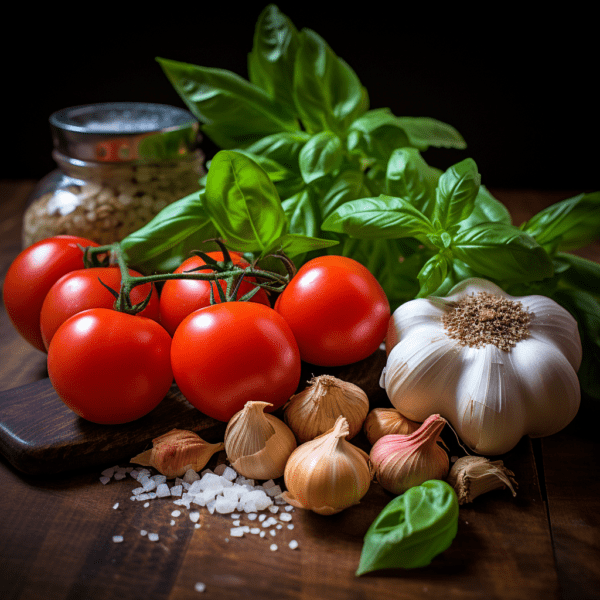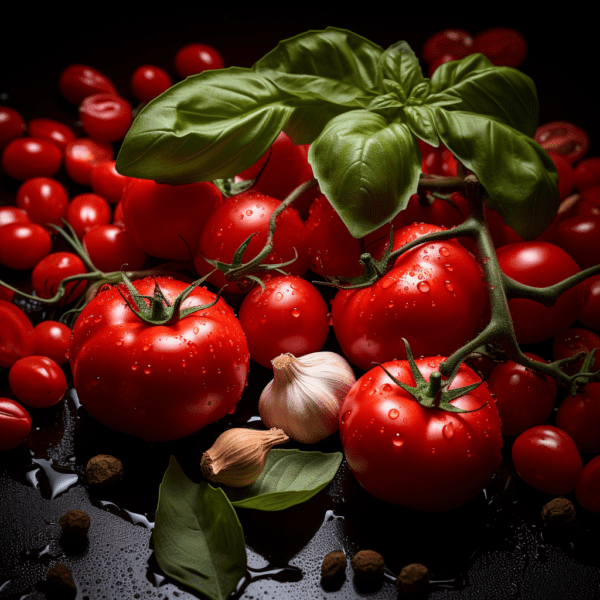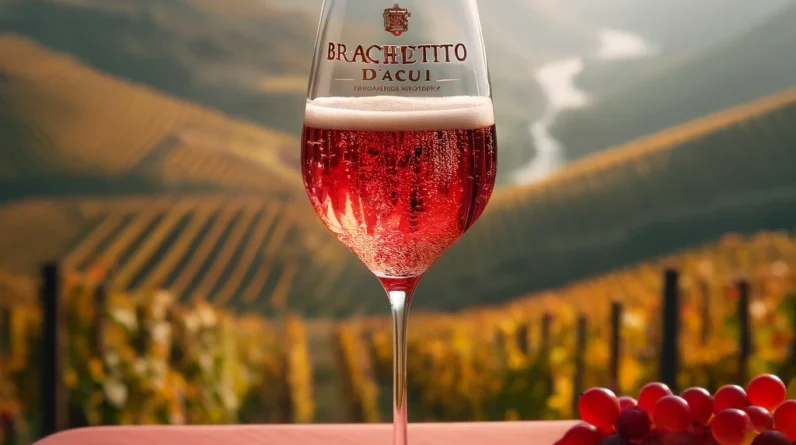
Best Wine Pairings for Homemade Bruschetta Varieties: A Guide to Enhancing Your Culinary Experience
Wine and food pairing is an art, and when it comes to homemade bruschetta, the choices are as diverse as they are delightful.
Understanding the nuances of pairing wine with different bruschetta varieties can elevate a simple dish to a gourmet experience.
This guide offers specific, sophisticated advice to enhance your culinary journey with the perfect wine and bruschetta pairings.
Understanding the Basics of Wine Pairing
Pairing wine with food is a delightful exploration of flavors.
The goal is to achieve a balance where the wine complements the dish without overpowering it.
A well-chosen wine can enhance the flavors of your bruschetta, making each bite a memorable experience.

Classic Tomato Bruschetta with Light Reds or Crisp Whites
Wine: For a classic tomato bruschetta, try a light-bodied red like Fleurie (Beaujolais) or a crisp white such as Kim Crawford Sauvignon Blanc.
Exclusive Alternative: For an exquisite pairing, try a Nebbiolo from Piedmont, Italy, known for its complexity and elegance, or a Vermentino from Sardinia, offering a unique minerality and herbal
notes.
Recipe: Dice ripe tomatoes and mix with minced garlic, fresh basil, olive oil, salt, and pepper.
Spoon onto toasted slices of baguette.
Tip: Use fresh, high-quality tomatoes for the best flavor.
The acidity in the tomatoes pairs wonderfully with the crispness of the Sauvignon Blanc.

Mushroom Bruschetta with Earthy Reds
Wine: Pair mushroom bruschetta with an earthy red like Chianti Classico or Meiomi Pinot Noir.
Exclusive Alternative: Opt for a Barbaresco, another gem from Piedmont, Italy, which pairs wonderfully with earthy flavors.
Alternatively, a Côte-Rôtie from the Rhône region in France, with its Syrah-based wines, offers a smoky and sophisticated touch.
Recipe: Sauté mushrooms with garlic, thyme, and a splash of balsamic vinegar. You can use portobello mushrooms, shiitake mushrooms or oyster mushrooms for this recipe.
Serve on toasted bread drizzled with olive oil.
Tip: Cooking the mushrooms until they are golden brown brings out their natural umami flavors, which complement the earthy notes of a Chianti Classico.
Cheese Bruschetta: A World of Pairings
Wine: For mozzarella bruschetta, opt for a light and zesty Pinot Grigio like Santa Margherita.
For stronger cheeses, try a bold Merlot like Blackstone.
Exclusive Alternative: For mozzarella, consider a Falanghina from Campania, Italy, which has a delightful aromatic profile.
For stronger cheeses like gorgonzola, a Bandol red from Provence, France, predominantly Mourvèdre, can be a luxurious choice.
Recipe: Top bruschetta with sliced mozzarella, fresh basil, and a drizzle of balsamic glaze.
For a bolder option, spread blue cheese, sprinkle with walnuts, and drizzle honey.
Tip: The freshness of the mozzarella is key.
A quality mozzarella pairs beautifully with the crispness of Pinot Grigio, while the bold flavors of blue cheese need the depth of a Merlot.
Savory Meat Bruschetta and Rich Reds
Wine: Pair meaty bruschetta with a robust Zinfandel like Ravenswood or a spicy Shiraz like Yellow Tail.
Exclusive Alternative: A Brunello di Montalcino, a Tuscan red known for its depth and richness, can be a magnificent pairing with meaty bruschetta.
Alternatively, a Priorat from Catalonia, Spain, known for its intense and full-bodied character, would also be an excellent choice.
Recipe: Layer thin slices of prosciutto on toasted bread, top with arugula, and a sprinkle of Parmesan cheese.
Tip: The saltiness of the prosciutto is balanced by the boldness of Zinfandel, while the peppery arugula complements the spiciness of a Shiraz.

Sweet and Spicy Bruschetta: Exploring Contrasts
Wine: For a sweet or spicy bruschetta, choose a contrasting Riesling like Dr. Loosen or a sparkling Prosecco like La Marca.
Exclusive Alternative: For a sweet bruschetta, a Tokaji Aszú from Hungary offers a luxurious sweetness with complexity.
For spicy bruschetta, a Gewürztraminer from Alsace, France, known for its aromatic and spicy profile, can be a fascinating contrast.
Recipe: For a sweet twist, top bruschetta with caramelized onions and goat cheese.
For spice, use roasted peppers and a sprinkle of chili flakes.
Tip: The sweetness of the onions is offset by the crispness of the Riesling, while the effervescence of Prosecco can cut through the spiciness of the peppers.
Each bruschetta and wine pairing is an opportunity to explore a symphony of flavors.
Experiment with these suggestions, adjusting to your personal taste.
Remember, the best pairing is not just about the flavors, but also about the experience and joy it brings to your table.

Exploring Your Culinary Creativity
Exploring your culinary creativity, especially in the realm of pairing wine with bruschetta, can turn your dining experience into an exciting and rewarding adventure.
Here are some tips and ideas to elevate your culinary skills and add a creative twist to your wine and bruschetta evenings at home.
Experiment with Ingredients
Try Different Breads: Beyond traditional baguette, experiment with focaccia, ciabatta, or sourdough.
Each bread brings a unique texture and flavor.
Play with Toppings: Go beyond the classic tomato and basil.
Think about using ingredients like roasted vegetables, artisan cheeses, or even fruit toppings like figs or pears.
Use Fresh Herbs and Spices: Fresh herbs like basil, thyme, or rosemary can transform your bruschetta.
Spices like crushed red pepper or smoked paprika can add a surprising twist.
Pairing Wines
Explore Regional Pairings: Try pairing wines and ingredients from the same region, like a Chianti with a bruschetta topped with Tuscan salami.
Think Contrasts: Balance spicy or intensely flavored bruschettas with sweeter or fruitier wines.
Experiment with Temperature: Chilling red wines slightly or serving white wines not too cold can reveal different aspects of their flavor profile.
Cooking Techniques
Grill Your Bread: For a smoky flavor, grill the bread before topping it.
Marinate Toppings: Marinate vegetables or cheeses in olive oil, vinegar, and herbs before placing them on your bruschetta.
Caramelization: Caramelizing onions or roasting tomatoes can add a rich, deep flavor to your bruschetta.
Presentation
Artful Arrangement: How you present your bruschetta can enhance the dining experience.
Arrange them on a rustic wooden board for a charming effect.
Garnish Wisely: A sprinkle of edible flowers, microgreens, or a drizzle of a reduction can add both flavor and visual appeal.
Theme Nights
Regional Themes: Have a night dedicated to a specific region’s cuisine and wine.
For example, an Italian night with various Italian bruschettas and wines.
Seasonal Themes: Use seasonal ingredients and pair them with wines that complement the season’s mood.
Educational Aspect
Wine Tasting Notes: While serving, talk about the wine’s characteristics, the vineyard, and why it pairs well with the specific bruschetta.
Cooking Demonstrations: If hosting guests, demonstrate how to make one of your bruschetta varieties.
It adds an interactive element to the evening.
Continual Learning
Attend Workshops: Participate in cooking classes or wine tasting sessions to broaden your knowledge.
Cookbooks and Blogs: Draw inspiration from cookbooks and food blogs that focus on pairing and international cuisines.
Remember, the key to elevating your dining experience is to enjoy the process of exploration and learning.
Each wine and bruschetta pairing is a chance to discover new flavors, textures, and combinations.
Embrace experimentation, and don’t be afraid to try unconventional pairings.

Hosting, Presenting, and Serving Wine and Bruschetta: Creating a Sophisticated Dining Experience
Hosting a wine and bruschetta evening is not just about the food and drink; it’s about creating an atmosphere that delights the senses and fosters conviviality.
Here’s how to ensure your gathering is as sophisticated and enjoyable as the pairings you serve.
Setting the Scene
Create Themed Decor: Align your decor with the theme of your evening.
For an Italian-themed night, incorporate elements like olive branches or Italian-themed table runners.
Outdoor Settings: If weather permits, consider an outdoor setting like a garden or patio.
Natural lighting and a gentle breeze can enhance the ambiance.
Personal Touches: Adding personal touches, such as handwritten place cards or custom decorations, can make guests feel special and welcomed.
Wine Presentation Techniques
Vertical Tasting: Offer different vintages of the same wine to compare how flavors evolve over time.
This can be a fascinating exploration for wine enthusiasts.
Blind Tasting: For a fun twist, consider blind tasting where guests guess the wine’s variety or region, heightening their sensory experience.
Wine Accessories: Utilize proper wine accessories like aerators, proper corkscrews, and wine charms for easy glass identification.
Bruschetta Bar
Seasonal and Local Ingredients: Emphasize seasonal and locally sourced ingredients for your bruschettas.
This not only offers the freshest flavors but also adds a story to your dishes.
Live Cooking Station: If feasible, a live cooking station where a chef prepares bruschetta to order can be an impressive addition.
Dietary Considerations: Include options for various dietary needs, such as gluten-free bread and vegan toppings, ensuring all guests are catered to.
Serving and Timing Strategies
Course Pairing: Consider serving each bruschetta and wine pairing as a separate course, creating a multi-course tasting menu.
Palate Cleansers: Offer palate cleansers like sparkling water or light sorbet between tastings to refresh the taste buds.
Expert Guidance: If possible, invite a sommelier or a culinary expert to guide the tasting and share insights, adding an educational dimension to your event.
Enhanced Attention to Detail
Custom Pairing Cards: Provide custom pairing cards that detail why each wine was chosen for a specific bruschetta, offering guests a deeper understanding.
Artful Plating: Use unique serving platters and arrange bruschettas artistically to create visually appealing displays.
Signature Pairing: Create a signature bruschetta and wine pairing for the night, something unique that guests will remember.
Ensuring Overall Guest Comfort
Accessible Information: Have information readily available about each wine and bruschetta, including allergens, for guests’ convenience.
Comfortable Seating Arrangements: Arrange seating to encourage conversation, perhaps in a semi-circle or small clusters around the venue.
Temperature Control: Ensure the space is comfortably heated or cooled, depending on the season.
Hosting a wine and bruschetta evening is as much about the atmosphere and experience as it is about the food and drink.
With these expanded tips, from advanced wine presentation techniques to refined serving strategies and attention to guests’ comfort, you’re well-equipped to host an event that’s not just a meal,
but a memorable experience.
Remember, the ultimate goal is to create an environment where the wine, food, and company all complement each other, making for a delightful and sophisticated gathering.
This comprehensive guide explores the art of pairing wines with various homemade bruschetta types, enhancing the culinary experience for enthusiasts and hosts alike.
In summary, the guide is a valuable resource for anyone looking to elevate their home dining experience with expertly paired wines and homemade bruschetta, offering practical advice, easy-made-at-home recipes, sophisticated options and some extra tips on how to spice up your dining scene and even entartain your friends.
FAQs
1. What are the best wines to pair with classic tomato bruschetta?
For classic tomato bruschetta, light-bodied reds like Pinot Noir or crisp whites such as Sauvignon Blanc work well.
They complement the acidity and freshness of the tomatoes.
2. Can I use different bread types for bruschetta?
Absolutely! While traditional baguette is common, experimenting with focaccia, ciabatta, or sourdough can add unique flavors and textures to your bruschetta.
3. What are some sophisticated wines for a more exclusive bruschetta pairing?
For an exclusive experience, try Nebbiolo or Vermentino with tomato bruschetta, Barbaresco or Côte-Rôtie with mushroom bruschetta, and Falanghina or Bandol red with cheese varieties.
4. How should I serve wine and bruschetta at a home gathering?
Create a comfortable and inviting setting with good lighting and music.
Present each wine with some background information and serve the bruschetta in a sequence from light to more robust flavors.
5. What are some unique bruschetta toppings to try?
Beyond the classics, consider toppings like roasted vegetables, different artisan cheeses, or even sweet options like figs or caramelized onions.
6. How do I cater to guests with different dietary needs?
Offer a variety of bruschettas, including vegan, gluten-free, and dairy-free options.
Label each type clearly to inform guests of the ingredients.
7. Is it okay to chill red wines for bruschetta pairings?
Yes, lightly chilling certain red wines, like lighter-bodied Pinot Noir, can enhance their flavors, especially in warmer weather.
8. Any tips for hosting a wine and bruschetta evening outdoors?
Ensure comfortable seating and consider elements like outdoor heaters or fans to keep guests comfortable.
Also, keep food covered to protect from outdoor elements.
9. How can I educate myself more about wine and bruschetta pairings?
Attend wine tasting events, participate in cooking classes focused on pairings, and read books or blogs about wine and culinary pairings for more insight.
10. Are there any non-alcoholic beverage options that pair well with bruschetta?
Sparkling water, non-alcoholic wines, or crafted mocktails can be great alternatives for those who prefer non-alcoholic options.
11. How can I present bruschetta and wine in a visually appealing way?
Use elegant serving platters and arrange the bruschettas artistically.
Serve wine in appropriate glassware and consider decorative elements like flowers or candles for added ambiance.
12. What are some palate cleansers I can use between different wine and bruschetta tastings?
Light sorbets, neutral crackers, or sparkling water work well as palate cleansers between different tastings to refresh the taste buds.







